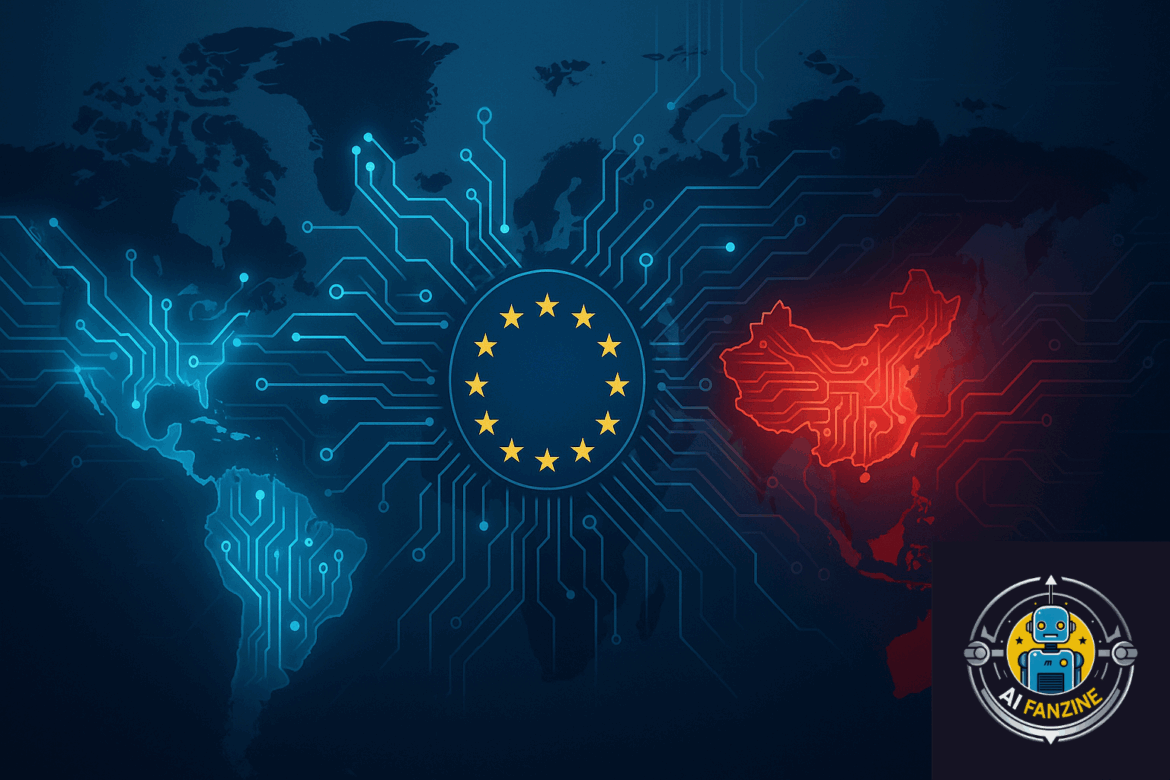Artificial Intelligence (AI) has developed faster than any governments expected. Innovation outstripped legal frameworks. But in 2025, the conversation has shifted from debates to making actual policy. Concrete laws, guidelines, and enforcement mechanisms are emerging worldwide. We are currently at a turning point.
Why Regulation Took So Long
AI evolved quickly while regulators hesitated. The regulators also were concerned about stifling innovation. Most governments trusted companies to self-regulate through their own internal ethics boards.
Some thought this might work in the short-term. It didn’t.
As AI grew powerful, the risks became impossible to ignore. Misinformation spread. Algorithms showed bias. Automated decisions discriminated against people. And, the public demanded accountability. Legislators had to react and to respond.
The EU’s Leading Role
The European Union took the most decisive steps. Their AI Act classifies applications by risk level. High-risk systems in healthcare, education, or criminal justice? They need strict evaluations before deployment. Companies must explain how their algorithms make decisions.
The EU’s setting a global precedent, just like with GDPR. Companies wanting European customers must comply. This creates a ripple effect. The EU has built a template others will follow.
The U.S. Playing Catch-Up
The United States favored industry-driven innovation with minimal interference. That’s changing.
Federal agencies are pushing harder in 2025. Data privacy, facial recognition, automated hiring, all getting attention. The White House issued executive orders on responsible AI. The FTC investigates deceptive practices. Congress is debating comprehensive AI legislation. In the U.S., the regulatory landscape is still developing, but it’s starting to take shape.
China’s Distinct AI Model
As with most efforts, China weaves regulation with its own state interests. Watermarks on AI-generated content are utilized to prevent deepfake misuse. Strict rules on news algorithms maintain information control.
What strikes me? The speed. China moved from experimentation to control in no time, ensuring innovation aligns with national objectives. China’s top down approach and quick implementation stands in a stark contrast to our Western approaches.
Balancing Innovation and Oversight
Here is the challenge: there needs to be a balance because too much regulation stifles competition and creativity. Too little regulation invites misuse.
The best frameworks will need to continue to stay flexible. The EU AI Act includes periodic reviews. EU lawmakers can revise their standards as the technology evolves. This matters because AI does not stand still. Every year brings applications nobody predicted. Rigid rules will become obsolete fast.
Ethics in Regulating AI
Governments are framing regulations around fairness, accountability, and transparency. These are policy foundations, not just catchy buzzwords. And, they are drawn from what the public has been saying.
Companies must now explain their AI decisions in human terms. From my experience, this will build trust. When people understand why a decision was made, then they’re more likely to accept it.
Industry Reactions
Tech companies show mixed responses. Some worry about slowed progress. Others see clear boundaries can be trust-builders. Major firms have created compliance teams.
But, the Smaller startups? They are struggling with this. Compliance adds extra costs and it creates barriers. In the end, it might be one way to consolidate power with the larger companies and leave smaller companies out to dry.
There is already talk that there won’t be democratization. There will be one big company left standing as the tech winner. This may be why the big tech firms are spending so much money on AI, data centers, and new cooling technologies. This is an industry trade-off that regulators must watch carefully.
Cross-Border Challenges
AI doesn’t respect borders. Train a model in one country, deploy it globally within days.
A company in both Europe and the U.S. navigates two different regulatory worlds. The OECD and G7 are working on global standards, but it’s the early days. Without any harmonization, conflicting regulations will likely create confusion.
Industry-Specific Impact
There may be industry specific impacts. Healthcare welcomes the strict oversight because lives are at stake. AI diagnostics must rise to the level and meet rigorous safety standards. The professionals I’ve spoken with appreciate the trust it builds.
Finance focuses on preventing discriminatory lending and ensuring transparent algorithmic trading. Companies prove their models don’t disadvantage certain groups.
Creative industries? They’re wrestling with copyright questions around AI-generated content. And, the debates are just starting.
Public Opinion Driving Policy
Deepfakes. Biased algorithms. Harmful misinformation.
High-profile incidents made people aware of the AI risks. Governments feel the pressure. Surveys show something interesting: trust in AI jumps when people know that clear rules do exist. This feedback loop, demand leads to regulation, regulation builds trust. This keeps AI adoption sustainable.
The Future of AI Governance
Regulation will grow more sophisticated. Some expect specialized AI oversight bodies, like the financial sector has. They will monitor compliance, conduct audits, and enforce the penalties.
Regulatory sandboxes will probalby expand. Companies can test their own innovations under supervision before a public release. Here is a smart balance, experimentation without the unchecked risks.
Why This Moment Matters
AI is not a niche chatbot tool anymore. AI is in the process of becoming IT infrastructure. In healthcare, education, finance, and entertainment. It’s everywhere. Just as we regulate electricity and transportation, we need to regulate AI for fairness and for accountability.
This alignment of technological necessity and along with the political will power is rare. Governments are being proactive, and no longer reactive. That’s mature policymaking.
Final Thoughts
For years, I wondered if regulation could keep pace with innovation. In the year 2025, the progress is real.
Perfect? No. Developing regulations will need refinement, cooperation, and adaptation across industries and across regions. But, the frameworks are emerging. Hopefully, society can search for and find a balance between innovation and the responsibility that comes along with it.
The regulatory foundation is being laid. Government regulations for AI are being developed and ready to finally taking shape. This will define how we as humanity are going to interact with this important technology in the future.

